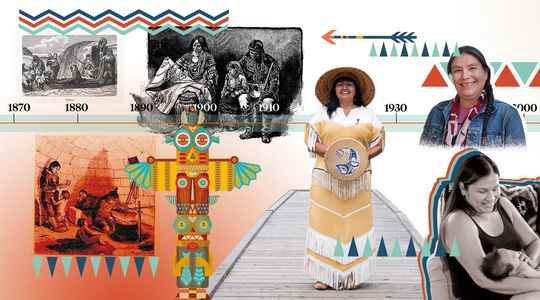A cultural genocide: this is how many experts describe the attitude of Canada towards the Aboriginal peoples from the establishment of the first settlers until recent times. And the agreement signed in January 2022, for an amount of 40 billion dollars* paid in part to more than 200,000 victims of an education system that takes children away from their parents and places them in establishments run by the State – where ill-treatment, physical or psychological, and sexual abuse were rampant – cannot change that.
“No amount of compensation can ever erase the trauma, declared Patty Hajdu, Minister of Indigenous Services, at the announcement of the federal commitment. But this agreement recognizes the survivors and their families the harm and the pain caused by discrimination.”
A long way
Beyond removing children from their homes, as part of a program implemented from the 1880s until 1996, for young people from First Nations, Métis and Inuit communities, this systemic discrimination has also deprived many Aboriginal people of access to public services – hospitals, social centers… – on the sole pretext that they were Amerindians. The demands of the communities, which constitute, according to the 2016 census, about 5% of the Canadian population – with a total of 1.6 million people, according to the different statuses – are old. The 2022 agreement is thus rooted in a series of class actions for human rights violations initiated in 2007 by the First Nations Child and Family Caring Society. But the discovery, in 2021, of the bodies of thousands of children in cemeteries adjoining schools reserved for Indigenous peoples, across the country, has moved the entire population and accelerated negotiations when, for years, the government had done everything to slow them down…
However, it will still take time to erase the devastating effects of past policies. Thus, last year, the unemployment rate for Aboriginal people was 11.6%, compared to 7.5% for the rest of Canadians. Only 11% of First Nations people, even in cities, had a university degree in 2016, compared to 30% for the rest of the population, and the median income was, for those who live in cities, at 83 000 dollars, against 106,000 for other citizens. Finally, on reserves, nearly half of Aboriginal people live in poverty, while life expectancy is only 70 years for Inuit men, for example, compared to 81.4 years for other Canadians, without forget the incarceration rate, which in 2016 was 4.5% for Aboriginal people, compared to 0.5% for the rest of the population…
*1$CAD = 0.74€
